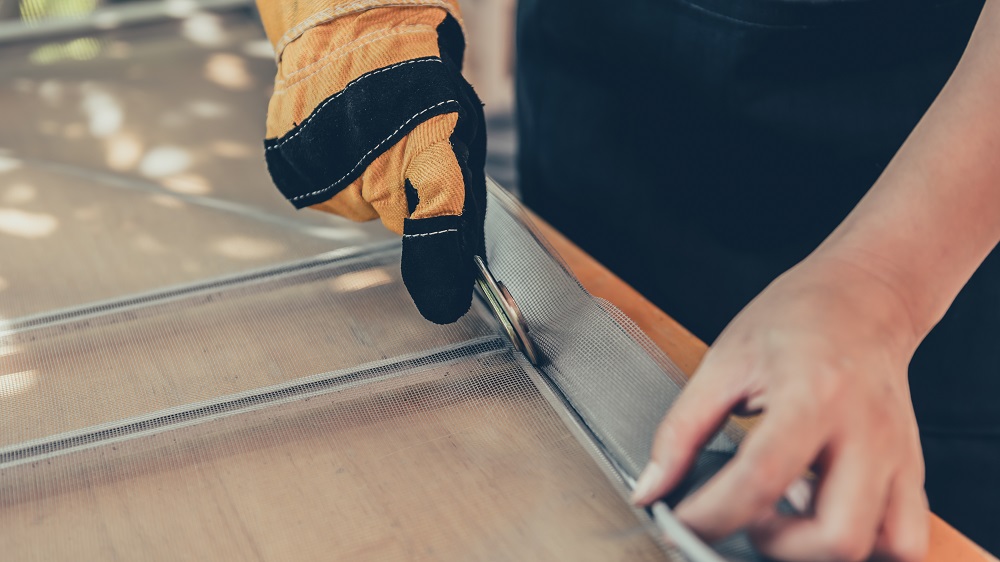Screen spline may sound like a technical term reserved for those in the window and door industry, but it’s an essential component that impacts the functionality and aesthetics of screens in doors and windows. In this comprehensive guide, we’ll delve into the intricacies of screen spline, exploring its purpose, types, materials, installation techniques, and much more.
What is Screen Spline?
Screen spline, often referred to simply as spline, is a flexible, rubber or vinyl material used to secure and hold screens tightly in window and door frames. It fits into a groove, known as a spline channel, around the perimeter of the frame, providing a snug fit for the screen mesh.
Purpose of Screen Spline
The primary purpose of screen spline is to keep the screen mesh securely in place within the frame, preventing it from sagging, bulging, or coming loose. Additionally, it helps to create a barrier against insects, dust, and debris while still allowing for airflow and visibility.
Types of Screen Spline
Screen spline comes in various types, each suited for different applications and preferences:
Round Spline: This is the most common type of spline, featuring a cylindrical shape. It’s versatile and works well for most standard screen installations.
Flat Spline: Flat spline has a flatter profile compared to round spline, making it suitable for thinner frames or situations where a lower profile is desired.
Ribbed Spline: Ribbed spline has ridges or ribs along its length, providing additional grip and security when installed. It’s often used in high-wind areas or for heavy-duty screen applications.
Foam Spline: Foam spline is made of foam rubber or foam vinyl material. It offers flexibility and is easy to install, making it a popular choice for DIY enthusiasts.
Materials Used in Screen Spline
Screen spline is typically made from rubber or vinyl materials, chosen for their flexibility, durability, and weather resistance. Rubber spline tends to be more flexible and easier to work with, while vinyl spline may offer better weather resistance and longevity.
Choosing the Right Size Spline
Selecting the correct size splines is crucial for a successful screen installation. Spline size is determined by the thickness of the screen frame’s spline channel and the diameter of the groove where the spline will sit. Using the wrong size spline can result in a loose or insecure screen fit.
Installation Process
Installing screen spline requires precision and attention to detail. Here’s a step-by-step guide to the installation process:
Prepare the Frame: Ensure the window or door frame is clean and free from debris. Inspect the spline channel for any damage or obstructions.
Cut the Screen Mesh: Cut the screen mesh to size, leaving a slight overlap around the frame to ensure complete coverage.
Position the Screen Mesh: Lay the screen mesh over the frame, ensuring it’s centered and aligned properly.
Insert the Spline: Starting at one corner, use a splines installation tool or a flat-headed screwdriver to press the spline into the groove, securing the screen mesh in place. Work your way around the frame, pulling the screen taut as you go.
Trim Excess Spline and Mesh: Once the splines is fully inserted, trim any excess screen mesh and spline using a utility knife or scissors.
Secure Corners: For added durability, reinforce the corners of the screen frame by overlapping and securing the screen mesh before inserting the splinse.
Test the Screen: After installation, gently press on the screen to ensure it’s securely in place and free from any wrinkles or sagging.
Maintenance and Replacement
While screen splines is designed to be durable, it may wear out over time due to exposure to sunlight, temperature fluctuations, and general wear and tear. Periodic inspection and maintenance can help prolong the lifespan of screen splines. If signs of damage or deterioration are detected, such as cracking or shrinking, it’s important to replace the splines promptly to maintain the integrity of the screen installation.
Conclusion
Screen splines may be a small component, but its role in maintaining the functionality and aesthetics of window and door screens cannot be understated. By understanding the different types, materials, and installation techniques associated with screen splines, homeowners and DIY enthusiasts can ensure successful screen installations that provide both protection and comfort.
Whether you’re replacing worn-out splines or embarking on a new screen installation project, investing time and attention into selecting the right splines and mastering proper installation techniques will yield long-lasting and satisfactory results for years to come.







